To refrigerate or not to refrigerate?
This conundrum surrounding mayonnaise continues to confuse many people. You may have heard that you must refrigerate mayonnaise or risk getting a nasty case of food poisoning.
On the other hand, you have the pantry patrons who swear that this is a misconception.
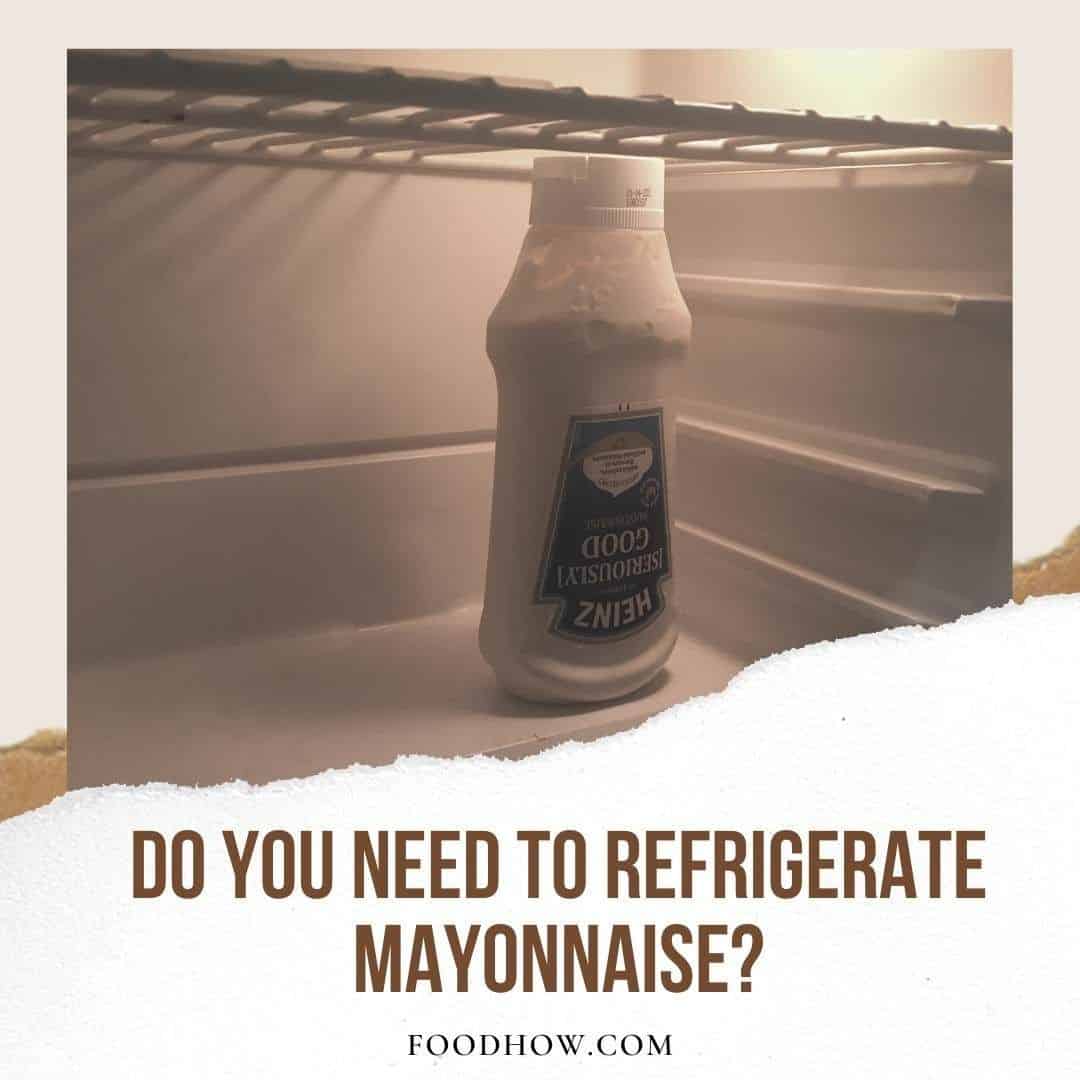
Here are the answers to some of the questions you may have concerning the storage, usage, and safety of this popular condiment.
What Is Mayonnaise Made Of?

Mayonnaise, also known as mayo, is a cold, rich table condiment or sauce made of vegetable oil, egg yolks, vinegar or lemon juice, and seasoning. When blended, these ingredients become a pale yellow and light cream to a thick emulsion. It goes well with hamburgers, sandwiches, salads, French fries, and many other foods.
What Does USDA Say About Storing Mayonnaise?
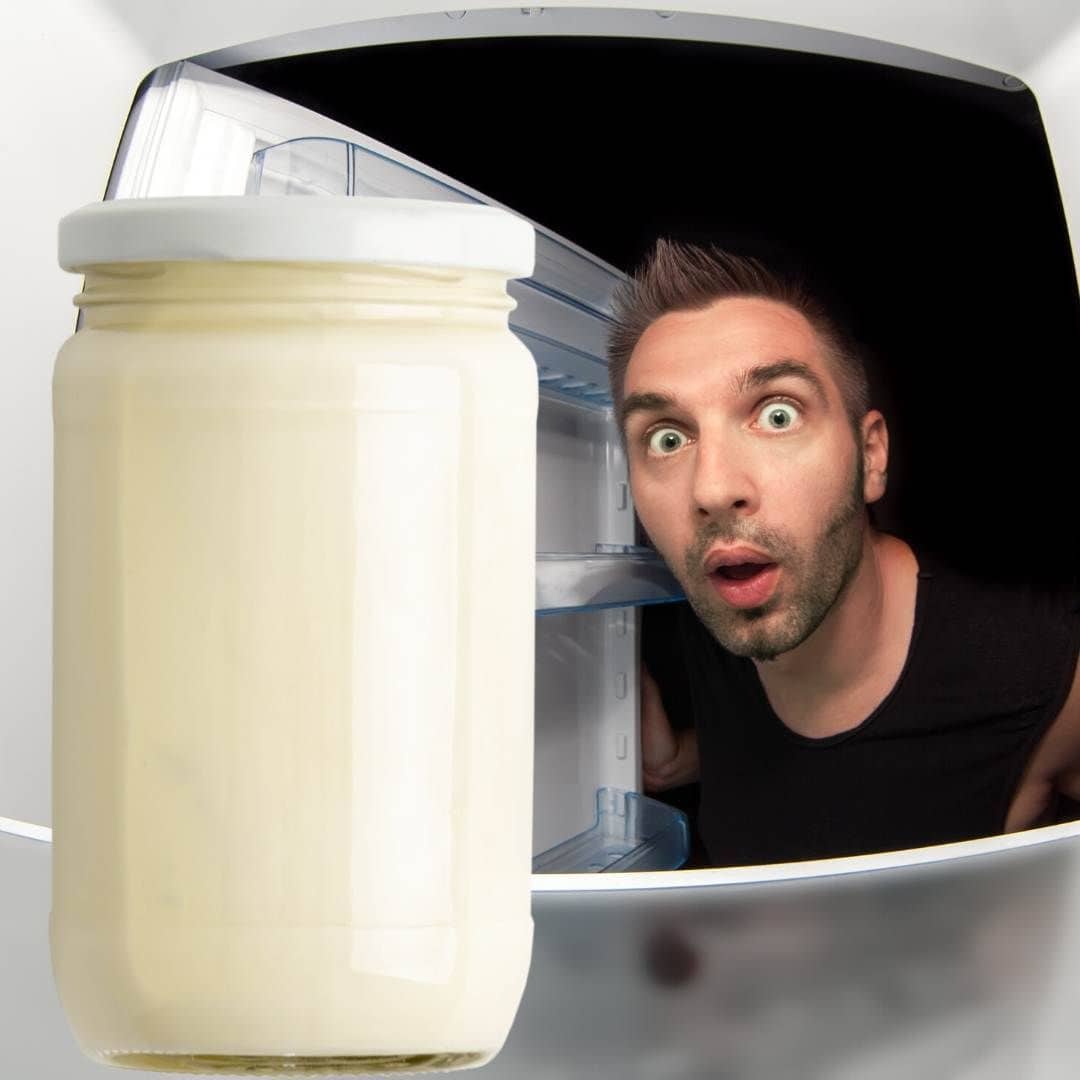
Does Mayo Need To Be Refrigerated?
According to USDA, commercially produced mayonnaise can be purchased off a non-refrigerated shelf but requires refrigeration after opening. However, homemade mayonnaise is classified as perishable food and needs to be stored in the fridge. [1]
The FDA (U.S. Food and Drug Administration) uses the “two-hour rule” for leaving food items that need refrigeration out at room temperature.
You should not allow homemade mayonnaise to sit at room temperature for more than 2 hours. If the air temperature is above 90 degrees Fahrenheit (32 degrees Celsius), don’t allow it to sit out for more than an hour. If it is left out for more then two hours, then it should be thrown away.
Unlike store-bought mayonnaise, homemade batches lack the amount of acid, preservatives and salt required for preservation. The eggs are also not pasteurized.
For homemade mayo, refrigeration is vital for preventing microbial growth as it is for quality maintenance. Homemade mayo (opened) can last from five days to a week in the fridge. This is provided you don’t cross-contaminate it with used utensils.
The case is a bit different for commercial, store-bought mayonnaise.
The FDA states that the eggs in commercial mayo are pasteurized before being mixed with lemon juice or vinegar. This mixture is not a conducive environment for microbes.
As such, it’s unlikely that your jar of store-bought mayonnaise will develop bacteria if you leave it sitting out for a while. This is the reason why it can sit on the store shelf for so long.
How Do People Actually Store It?
The consensus seems to be that the storage guidelines for unopened mayonnaise are pretty much the same as for other condiments. Most people agree that you don’t need to refrigerate unopened mayo. That is, unless the label says otherwise.
Most people would also agree that keeping the condiment in the fridge increases shelf life. Overall, it appears that the bad rap surrounding Mayo has gradually disappeared. I can attribute this to the discovery that the acid in mayo acts as a deterrent to bacterial growth. [2]
Today, most people know that you are more likely to get food poisoning from the food your mayonnaise is dressing than the condiment itself.
However, when it comes to homemade mayo, most people believe that it does need refrigeration. Refrigeration is necessary since the eggs used for homemade mayo are not pasteurized.
Storing Vegan Mayo
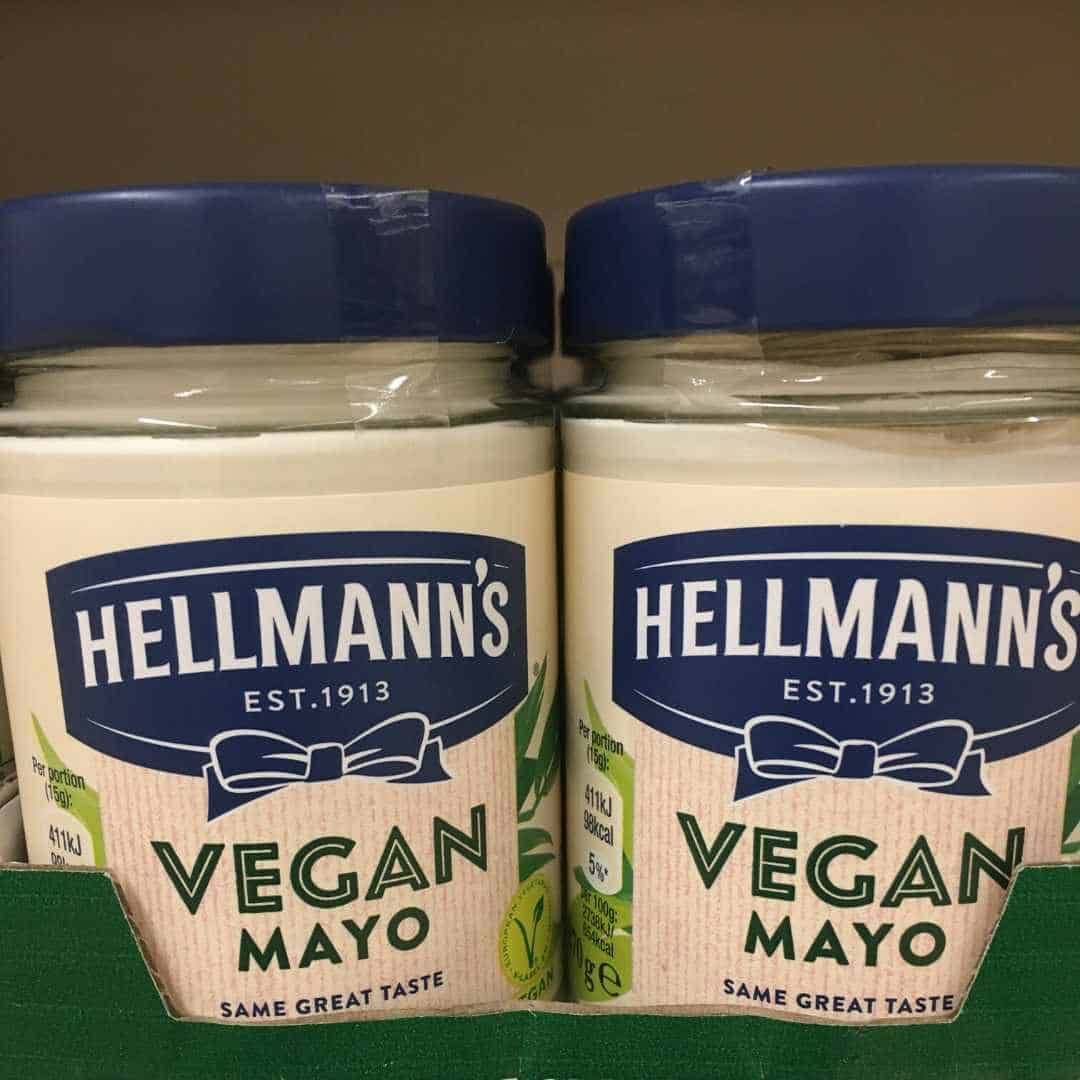
Vegan mayonnaise is made of similar ingredients to the non-vegan version. However, instead of eggs, it may contain soy or pea protein, soy milk, or aquafaba. Store it as you would store a regular mayo and refrigerate after opening.
If you purchased it from the cold aisle in the shop, keep it in the fridge even if it is not opened. Always check the label for storage instructions as many vegan condiments contain fewer preservatives and therefore are more perishable.
Related article:17 Surprisingly Effective Substitutes for Eggs
What Happens To Mayonnaise If Left Out?
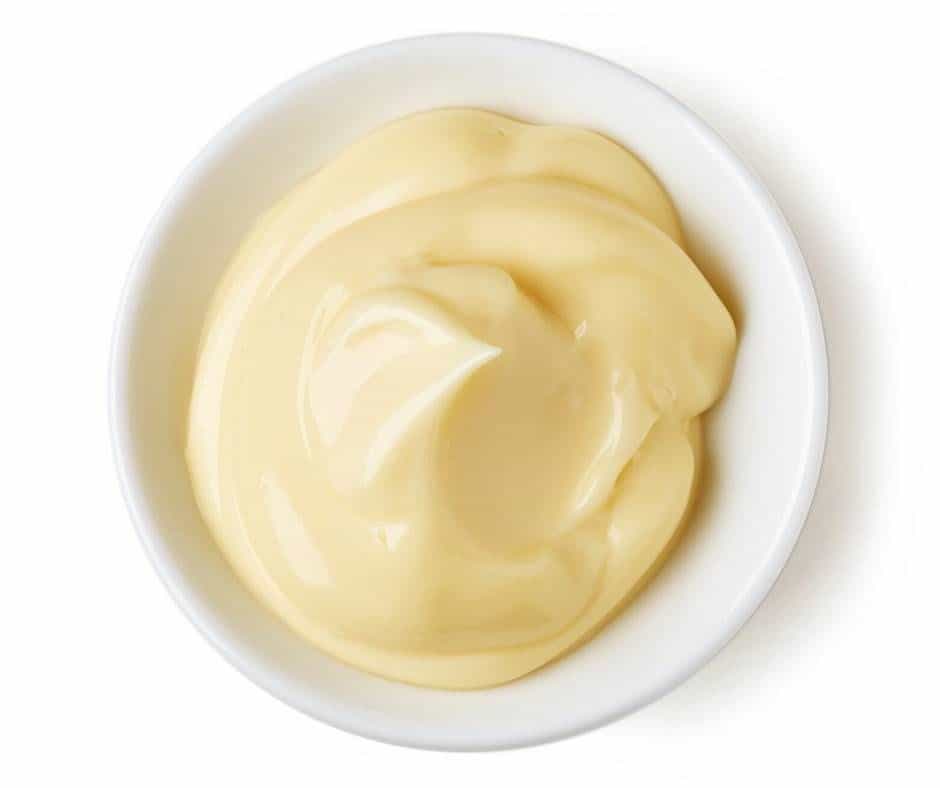
When you leave mayonnaise (opened) out of the fridge for a considerable amount of time, two things usually happen. First, you will witness a slight separation of the vegetable oil. The vegetable oil will then turn rancid.
Next, water separation will occur at the bottom of the jar. This is usually the first sign that the egg yolk (the emulsifier) in the mayo is going bad. You will also notice a change in the color and odor of your condiment.
How Do You Know If Mayonnaise Has Gone Bad?

The shelf life of your mayo will mostly depend on the storage conditions. If you don’t store it correctly, the mayo will spoil before its expiry date. Refrigeration is one of the best ways to extend the shelf life of your mayonnaise.
The good news is that it’s not difficult to notice if mayonnaise has gone bad.
Below are some signs to help you determine if your mayo is no longer safe for consumption:
- Look for any organic growths like mold or spores inside the jar.
- You will notice a change in color. Your mayo will have a brownish-yellow hue or darker shade of white.
- You will notice a putrid smell.
- There will be a change in texture.
- Your mayo will have an off taste.
Can You Freeze Mayonnaise?

You should never freeze mayonnaise. Most commercial mayonnaises have “Do Not Freeze” labels. When you freeze mayo, the vegetable oils separate from the solids. When you thaw it, the mayo will not return to the blended suspension (emulsion), even when you stir. The result of freezing mayo is a ruined condiment.
Related article: What Happens If You Freeze Milk?
Glass Jar vs. Squeeze Bottles – Does That Make Any Difference?
Most commercial mayonnaises come in glass containers rather than squeeze bottles. Since mayo is thick, it doesn’t flow so well; therefore, glass jars make it easier to use it (you need to use a lot of mayo compared to, say, ketchup). However, mayonnaise does come in squeeze bottles.
Regarding storage, squeeze bottles have an advantage over glass jars. It is much harder to cross-contaminate your mayo in a squeeze bottle (only when you touch the opening).
With a glass jar, you use a spoon most of the time, making cross-contamination very likely. So, despite the fact that mayo won’t grow much bacteria on its own, little pieces of tuna or eggs you might leave in it will.
Interesting Facts
- Mayonnaise slows down the growth of bacteria, and in the past, it was, in some cases, used as a preservative.
- Mayonnaise serves as the base for other popular condiments, including tartar sauce, aioli, Thousand Island, and Ranch.
- You can use it to moisturize dry hair and skin.
- You can even use it to remove bubble gum from your hair, shine silver, and remove a stuck ring from your finger.
- Russia is the only country in Europe where mayo is sold more than ketchup.
- Approximately 80 million eggs are used annually to produce commercial mayonnaise in the U.S.
- This condiment is believed to have been invented in 1756 by the French chef the Duke de Richelieu.
Tips and Tricks
- If you have your mayo in a squeeze bottle, clean it with a dry paper towel and not a wet one.
- Use irradiated eggs to make your mayo. They have no risk of salmonella contamination. [3]
- Store it in your fridge door. It may get too cold in the inner sections causing the oil to separate.
- To keep your mayo fresher for longer, get rid of the cardboard liner inside the lid.
Conclusion
Refrigerating store-bought mayonnaise has more to do with quality and less to do with food safety. You can leave it out at room temperature as long as you don’t contaminate it with dirty utensils or other foods.
However, keeping your mayo in the fridge will extend its shelf life, taste, and overall quality. Note that homemade mayonnaise is a different case that always requires refrigeration since it’s prepared with unpasteurized eggs.
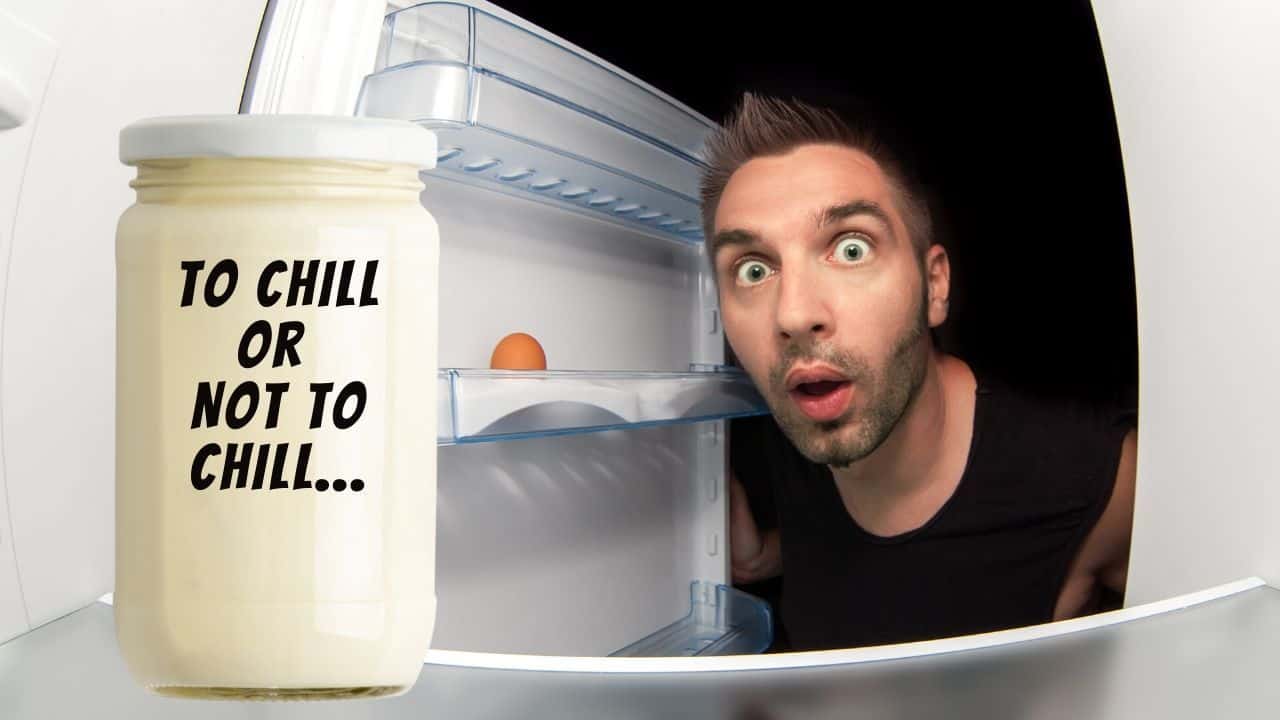
Appreciate this post. Let me try it out.